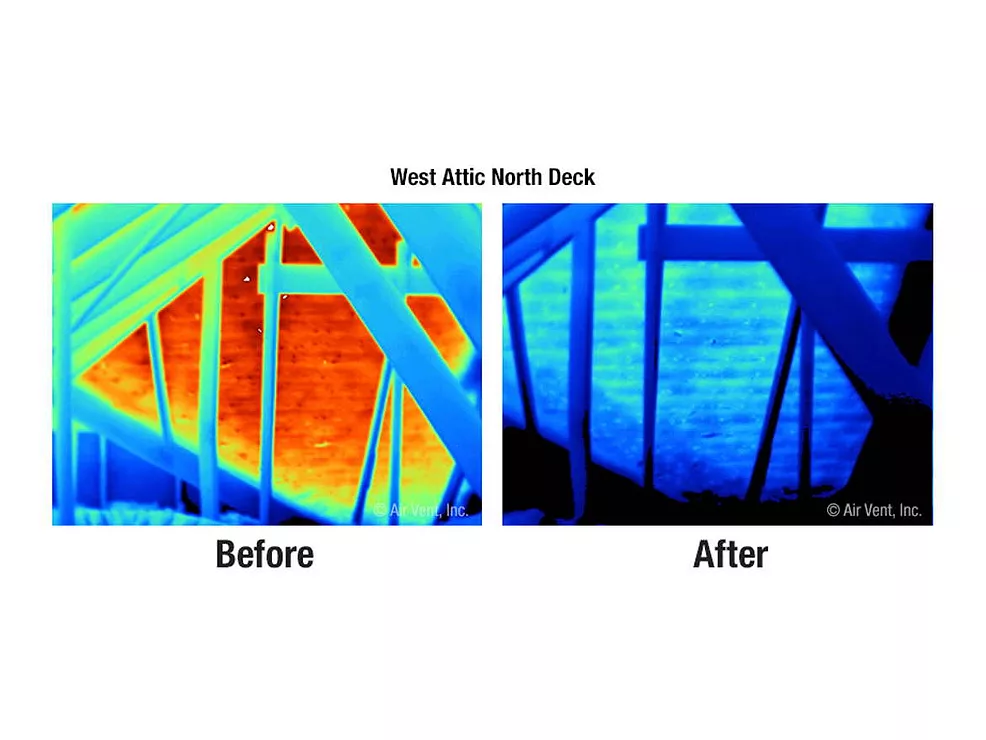Technical Details: Proper Details for SPF Roof Systems
The vast majority of roof leaks occur at flashings, penetrations and terminations. Regardless of the roof covering system, these locations become the most critical points of proper weatherproofing. In this respect, SPF systems are no different. This article provides proper detail recommendations for SPF systems at the most common flashing and penetration locations.

The vast majority of roof leaks occur at flashings, penetrations and terminations. Regardless of the roof covering system, these locations become the most critical points of proper weatherproofing. In this respect, SPF systems are no different. This article provides proper detail recommendations for SPF systems at the most common flashing and penetration locations.
There are three phases to proper SPF applications. They are substrate preparation, foam spraying and coating application. Each of these phases also plays a critical role in flashing and penetration applications. Substrate preparation includes properly removing all dust, dirt and other contaminants from the substrate surface. This can be accomplished through air pressure, vacuum equipment, brooming and in more extreme cases sand blasting. The cleanliness of the substrate, whether it is brick, concrete, wood or metal, is important for complete SPF adhesion.
The foam application at these areas must be in compliance with standard system applications. It is imperative that the applicator follows the SPF manufacturer’s requirements for weather conditions, lift requirements, cure time and surface finish. In most of the flashing and penetration details the surface coating application acts as the weatherproofing protection. Application of this component must meet the manufacturer’s requirements including the extension of the membrane liquid coating above the foam application.
 Flashing Detail for Wall-Supported Deck
Flashing Detail for Wall-Supported Deck
In vertical flashing applications at walls that are supported by the deck and no relative movement is required, the flashing detail should be completed in the following manner. A sheet metal sub-plate that extends over the deck and up the vertical wall should be set at the vertical transition. The sheet metal sub-plate should only be secured to the deck, not at the vertical wall. Securement should be with appropriate fasteners at rates required by the designer. Application of a vertical cant strip in this location is optional.
The SPF foam application should be applied from the base of the system up the vertical transition (cant strip if applied) to a minimum of 8 inches above the surface. The elastomeric coating should extend a minimum of 2 inches above the foam application. A covering - such as a counterflashing - can be applied over the liquid coating application.
Wall Flashing With Expansion Joint
In a wall situation where an expansion joint is required to isolate the roof system from the supported framing and wall, the SPF foam and coating application mirrors a typical vertical flashing detail. The difference is that the material is applied to an expansion joint baseboard set at the substrate and placed in front of compressible insulation at the vertical wall. The elastomeric coating expands a minimum of 2 inches above the foam. A flexible membrane is applied as a covering over the expansion joint component. The flashing system is covered with a counterflashing with expansion/contraction capabilities.
Flashing Details at Raised Curbs
Raised curbs for skylights, hatches and mechanical equipment are flashed similar to all vertical applications. The liquid coating extends above the foam a minimum of 2 inches. The metal covering from the equipment housing is typically fastened above the counterflashing with the appropriate fasteners every 8 inches on center.It is important to note that any weep holes in the metal coverings should not be coated over with sprayed foam or coating.
 Typical Roof Edge Detail
Typical Roof Edge Detail
In remedial applications the SPF is applied over the existing metal gravel stop. On aggregate surfaced roofs, the existing aggregate should be spudded clean to expose a minimum of 3/4 inches of height of the gravel stop. The SPF is then applied to the gravel stop leaving an optional V-groove at the metal for caulking filler. Some manufacturers require three coats of liquid-applied coating near the edge to add additional thickness and protection.
Typical Pipe Penetrations
For pipe and tubular penetrations, apply a prefabricated flexible covering over the pipe prior to SPF application. The cover should be adhered to the substrate and is in place to permit relative movement. The SPF foam and coating shall be applied over the cover in a full and even application to a minimum of 8 inches above the surface. A draw band is set at the top of the flange with a bead of sealant applied at the top of the flange for waterproofing protection. The draw band is typically adhered to the pipe with an elastomeric sealant.
In all flashing applications the applicator should use the manufacturer’s required materials and follow application instructions. The SPF foam and coating applications should be completed in a full and even application and in accordance with the manufacturer’s application thicknesses.

The vast majority of roof leaks occur at flashings, penetrations and terminations. Regardless of the roof covering system, these locations become the most critical points of proper weatherproofing. In this respect, SPF systems are no different. This article provides proper detail recommendations for SPF systems at the most common flashing and penetration locations.
There are three phases to proper SPF applications. They are substrate preparation, foam spraying and coating application. Each of these phases also plays a critical role in flashing and penetration applications. Substrate preparation includes properly removing all dust, dirt and other contaminants from the substrate surface. This can be accomplished through air pressure, vacuum equipment, brooming and in more extreme cases sand blasting. The cleanliness of the substrate, whether it is brick, concrete, wood or metal, is important for complete SPF adhesion.
The foam application at these areas must be in compliance with standard system applications. It is imperative that the applicator follows the SPF manufacturer’s requirements for weather conditions, lift requirements, cure time and surface finish. In most of the flashing and penetration details the surface coating application acts as the weatherproofing protection. Application of this component must meet the manufacturer’s requirements including the extension of the membrane liquid coating above the foam application.

Application of spray polyurethane foam must meet the manufacturer’s requirements for weather conditions, lift requirements, cure time and surface finish. (Photo by Tom Watts.)
In vertical flashing applications at walls that are supported by the deck and no relative movement is required, the flashing detail should be completed in the following manner. A sheet metal sub-plate that extends over the deck and up the vertical wall should be set at the vertical transition. The sheet metal sub-plate should only be secured to the deck, not at the vertical wall. Securement should be with appropriate fasteners at rates required by the designer. Application of a vertical cant strip in this location is optional.
The SPF foam application should be applied from the base of the system up the vertical transition (cant strip if applied) to a minimum of 8 inches above the surface. The elastomeric coating should extend a minimum of 2 inches above the foam application. A covering - such as a counterflashing - can be applied over the liquid coating application.
Wall Flashing With Expansion Joint
In a wall situation where an expansion joint is required to isolate the roof system from the supported framing and wall, the SPF foam and coating application mirrors a typical vertical flashing detail. The difference is that the material is applied to an expansion joint baseboard set at the substrate and placed in front of compressible insulation at the vertical wall. The elastomeric coating expands a minimum of 2 inches above the foam. A flexible membrane is applied as a covering over the expansion joint component. The flashing system is covered with a counterflashing with expansion/contraction capabilities.
Flashing Details at Raised Curbs
Raised curbs for skylights, hatches and mechanical equipment are flashed similar to all vertical applications. The liquid coating extends above the foam a minimum of 2 inches. The metal covering from the equipment housing is typically fastened above the counterflashing with the appropriate fasteners every 8 inches on center.It is important to note that any weep holes in the metal coverings should not be coated over with sprayed foam or coating.

In remedial applications the SPF is applied over the existing metal gravel stop. On aggregate surfaced roofs, the existing aggregate should be spudded clean to expose a minimum of 3/4 inches of height of the gravel stop. The SPF is then applied to the gravel stop leaving an optional V-groove at the metal for caulking filler. Some manufacturers require three coats of liquid-applied coating near the edge to add additional thickness and protection.
Typical Pipe Penetrations
For pipe and tubular penetrations, apply a prefabricated flexible covering over the pipe prior to SPF application. The cover should be adhered to the substrate and is in place to permit relative movement. The SPF foam and coating shall be applied over the cover in a full and even application to a minimum of 8 inches above the surface. A draw band is set at the top of the flange with a bead of sealant applied at the top of the flange for waterproofing protection. The draw band is typically adhered to the pipe with an elastomeric sealant.
In all flashing applications the applicator should use the manufacturer’s required materials and follow application instructions. The SPF foam and coating applications should be completed in a full and even application and in accordance with the manufacturer’s application thicknesses.
Looking for a reprint of this article?
From high-res PDFs to custom plaques, order your copy today!


